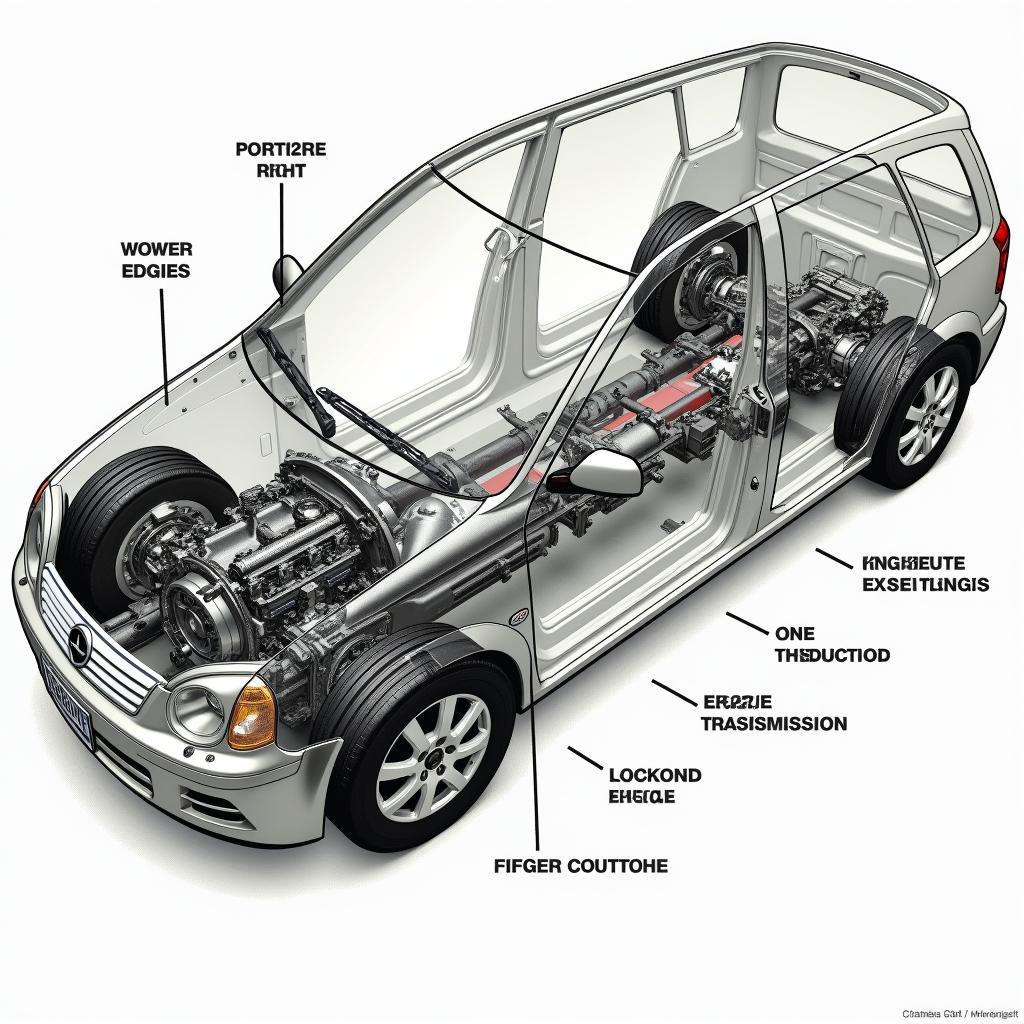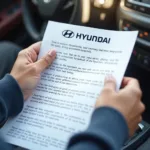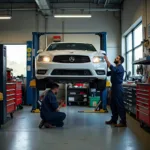Owning a new car is exciting, but understanding the ins and outs of your car warranty can feel like navigating a maze. A car warranty acts as a safety net, offering peace of mind knowing you won’t be stuck with hefty repair bills for covered components. But “What Service Are Included In Car Warranty?” is a question many car owners find themselves asking. This article delves into the specifics of car warranties, outlining the services typically covered and those that often aren’t.
Deciphering Your Car Warranty: What’s Typically Covered?
Car warranties vary by manufacturer and specific warranty terms, but most new car warranties cover the following:
- Powertrain Coverage: This is the heart of your car warranty, covering major components like the engine, transmission, and axles.
- Bumper-to-Bumper Warranty: Also known as the basic warranty, this typically covers most components of your vehicle, from the air conditioning to the electrical system, for a specified period.
- Corrosion Protection: Safeguards your vehicle against rust and corrosion, demonstrating the manufacturer’s confidence in the quality of materials used.
What About Routine Maintenance?
While a car warranty protects you against unexpected component failures, it generally doesn’t cover routine maintenance like:
- Oil Changes: Regular oil changes are essential for engine health, but they are considered the owner’s responsibility.
- Tire Rotations: Ensuring even tire wear requires regular rotations, a service not typically covered under warranty.
- Brake Pad Replacements: Brake pads wear down over time due to friction and require replacement, usually at the owner’s expense.
Expert Insight:
“Think of a car warranty like insuring your house,” says John Miller, a seasoned automotive technician at ABC Auto. “It covers major structural issues, not daily upkeep like mowing the lawn or cleaning the gutters.”
Understanding the Fine Print: Exclusions and Limitations
It’s crucial to thoroughly read your car warranty documentation to understand its specific exclusions and limitations. Common exclusions include:
- Wear-and-Tear Items: Components like brake pads, tires, and wiper blades are subject to normal wear and tear and aren’t typically covered under warranty.
- Damage from Accidents or Negligence: If your car experiences damage from an accident, vandalism, or improper maintenance, your warranty likely won’t cover the repairs.
- Modifications and Aftermarket Parts: Installing aftermarket parts or making significant modifications to your vehicle can void certain aspects of your warranty.
Do You Have to Service Your Car Every Year?
While not always mandatory for maintaining your warranty, regular car servicing is highly recommended. Do you have to service your car every year? Explore this question further in our detailed article to understand the implications and benefits of annual car servicing.
Maximizing Your Warranty Coverage
To get the most out of your car warranty:
- Adhere to the Maintenance Schedule: Follow the manufacturer’s recommended maintenance schedule outlined in your owner’s manual. This helps identify potential issues early and ensures warranty compliance.
- Keep Detailed Records: Maintain a record of all service and repair receipts. This documentation is crucial when making warranty claims.
- Address Issues Promptly: If you notice any issues with your vehicle, don’t delay. Contact your dealership or authorized service center to have the problem diagnosed and addressed promptly.
Conclusion
A car warranty provides valuable protection for your investment, covering major component failures and offering peace of mind. By understanding the inclusions, exclusions, and best practices for maximizing coverage, you can navigate car ownership with confidence. Remember, while a warranty is a safety net, proactive maintenance is key to ensuring your vehicle’s long-term health and performance.


